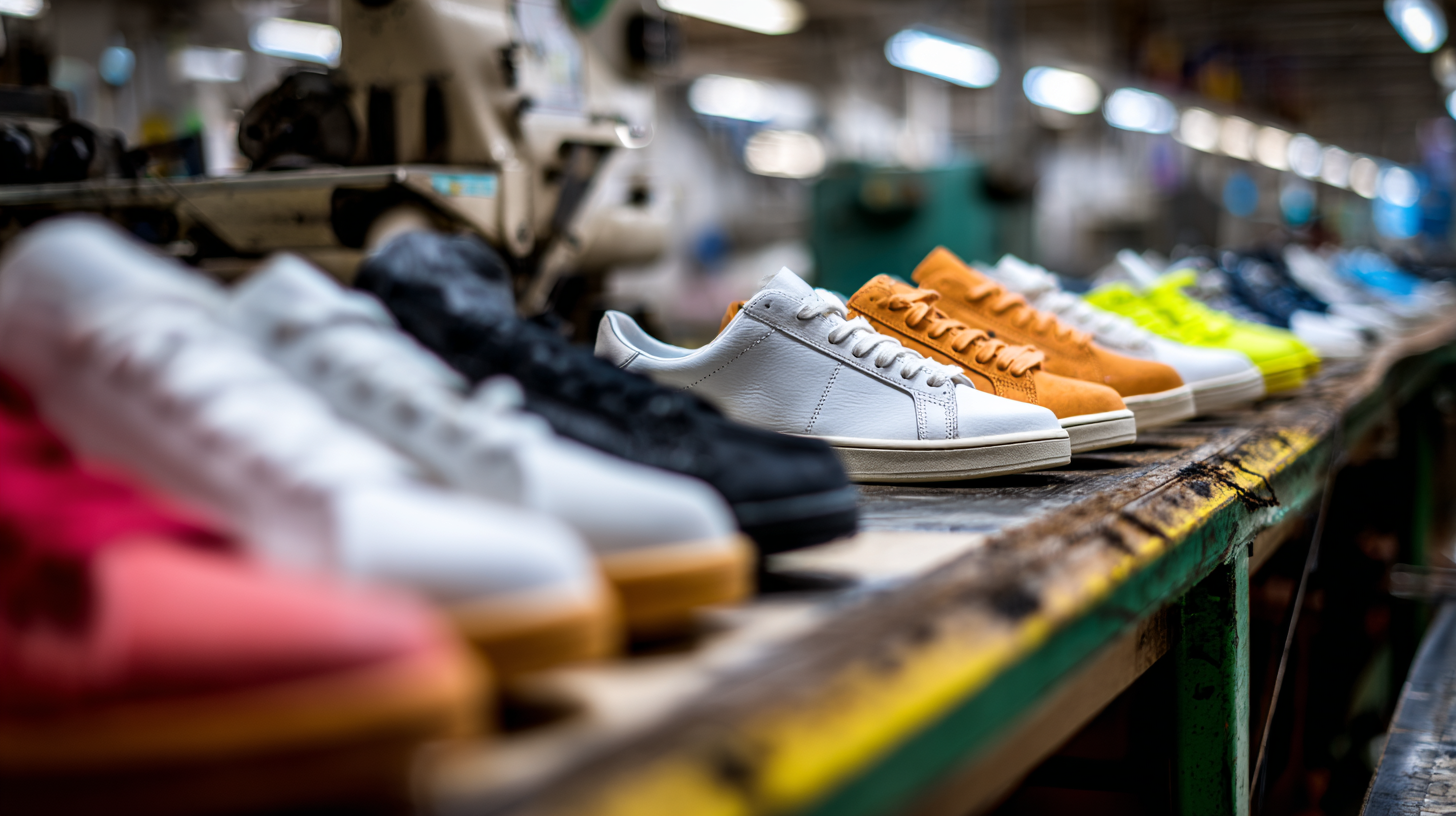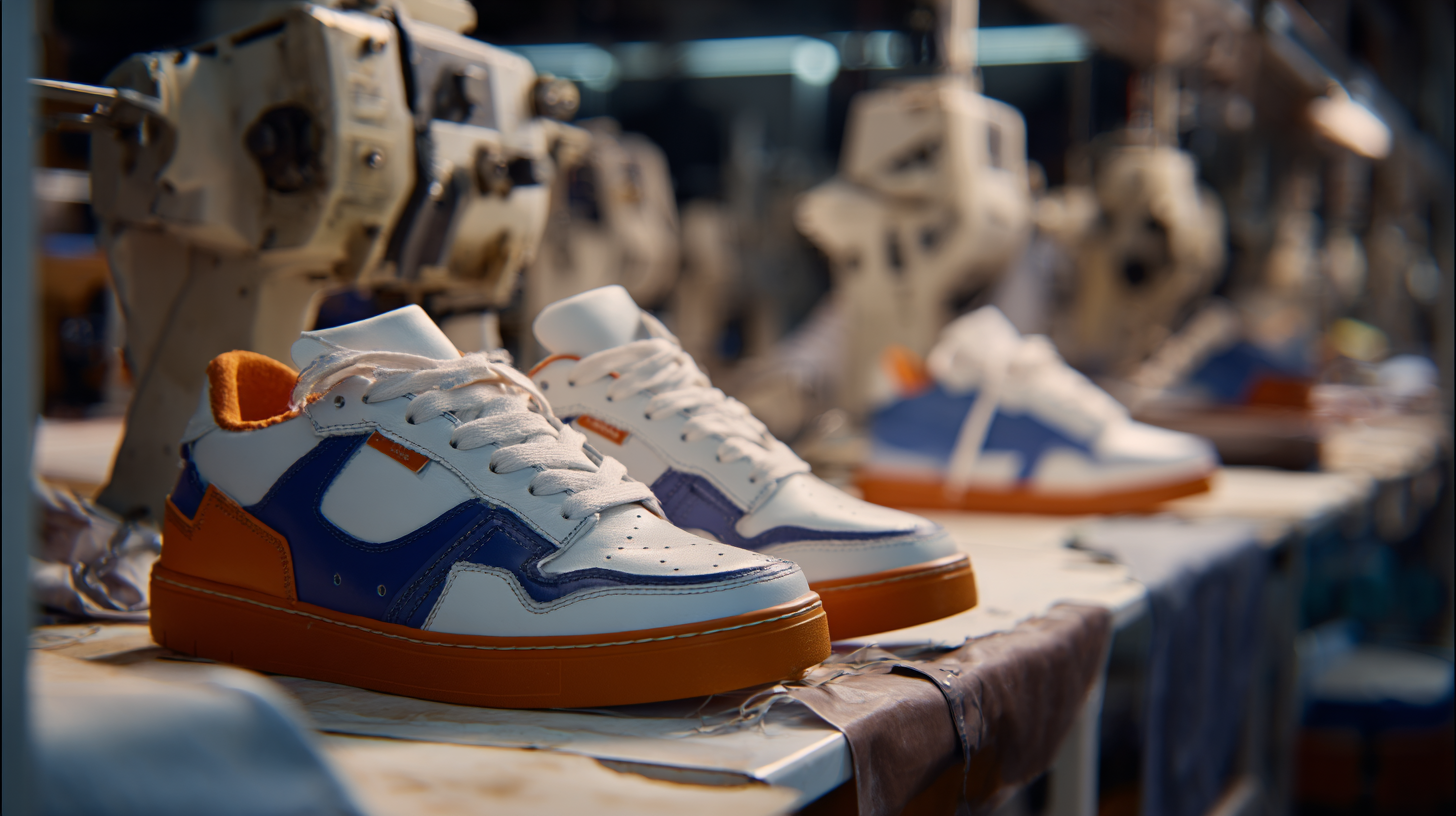
In the ever-evolving landscape of the footwear industry, Custom Made Sneakers have emerged as a significant trend, appealing to global buyers who seek personalization and unique design. According to a recent report by Grand View Research, the global custom footwear market is projected to reach $24.4 billion by 2025, underscoring the growing demand for individualized sneaker options. However, this surge in demand comes with its own set of challenges, especially in production processes that adhere to varying industry standards. One critical aspect that manufacturers must navigate is the implementation of effective after-sales service and managing repair costs, which are essential for maintaining customer satisfaction and brand loyalty. As companies strive to meet the expectations of discerning consumers, understanding how to overcome these challenges becomes crucial for sustaining competitive advantage in the custom sneakers market.

Sourcing quality materials for custom sneakers in China presents a multitude of challenges that global buyers must navigate. One of the most significant hurdles is the variability in material standards across suppliers. Different manufacturers may have diverse definitions of quality, leading to inconsistencies in the final product. To mitigate this issue, buyers need to conduct thorough research, seeking suppliers with a proven track record and clear certifications. Establishing strong communication with manufacturers is essential, as it allows for better alignment on expectations and requirements.
Another challenge lies in the availability of specialized materials. Custom sneakers often require unique textiles and components that may not be widely available. Buyers must invest time in understanding the local market and building relationships with local suppliers who can provide these specialized materials. Additionally, it is crucial to stay updated on industry trends and emerging materials that can enhance the quality of the sneakers. By fostering collaboration with trusted sources, brands can ensure that the production process remains smooth and that the final product meets the high standards expected by consumers.
The global footwear industry is evolving rapidly, driven by shifting consumer preferences and technological advancements. In the realm of custom-made sneakers, understanding these industry trends is crucial for navigating challenges in production. Reports indicate that by 2031, the demand for "on-demand" printing in fashion will significantly impact production techniques, allowing for increased personalization and efficiency. As the luxury footwear market is projected to grow substantially, brands must adopt innovative approaches to meet the higher expectations of global buyers.
Tips: To stay ahead in custom production, consider leveraging data analytics to gauge market trends and consumer preferences. Investing in advanced manufacturing technologies can also streamline production processes, enhancing speed and quality.
Additionally, the rise of direct-to-consumer sales channels is reshaping how brands interact with customers. The shift towards online retail, coupled with a growing awareness of health and wellness, particularly for products like tennis shoes, emphasizes the need for brands to develop agile production systems that can quickly adapt to these changes. Keeping a close eye on regional market dynamics, especially in the expanding Asia-Pacific region, will be vital for strategic positioning in this competitive landscape.
The sneaker manufacturing industry is increasingly prioritizing sustainability as consumers demand eco-friendly products. The shift towards sustainable practices is apparent, with a significant number of brands investing in materials and methods that minimize environmental impact. Innovative solutions, such as those developed through collaborations leveraging cutting-edge technologies, have emerged, showcasing the potential for producing sneakers entirely from sustainable materials.
Tips for brands to enhance their sustainability efforts include considering the use of recycled materials in production, which can significantly reduce waste. Additionally, implementing energy-efficient manufacturing processes not only helps decrease a brand's carbon footprint but also improves overall operational efficiency. Brands should also focus on sustainable packaging solutions that minimize plastic use, thereby further contributing to environmental protection.
As the global retail landscape evolves, it becomes essential for brands to align with the growing consumer preference for sustainability. By adopting eco-friendly practices, they can not only meet market demand but also play a crucial role in the broader effort to combat climate change. Engaging consumers through transparent sustainability efforts can also enhance brand loyalty and create a positive reputation in the competitive sneaker market.

Navigating international standards in the production of custom-made sneakers presents significant challenges for manufacturers looking to cater to a global market. Compliance with such standards is not merely a legal obligation; it is essential for ensuring product safety and quality. According to a report by the American Apparel and Footwear Association (AAFA), 75% of brands consider compliance with international standards a top priority, highlighting the critical need for manufacturers to remain informed and adapt their production processes accordingly.
The complexity of international regulations can vary greatly from region to region. For instance, the European Union’s REACH regulation mandates that all footwear products adhere to strict chemical safety requirements, which require extensive testing and documentation. Reports indicate that non-compliance can result in penalties of up to €1 million for companies, further underscoring the importance of ensuring that custom sneaker production meets these criteria. By investing in proper compliance strategies and testing procedures, global manufacturers can not only avoid costly penalties but also enhance their market reputation and customer trust.
In the rapidly evolving sneaker industry, leveraging technology is essential for addressing the unique challenges faced by manufacturers of custom-made sneakers. According to a recent report by McKinsey & Company, the adoption of innovative production technologies can reduce lead times by up to 50%. This remarkable acceleration allows brands to better meet the customized demands of global buyers, who increasingly expect personalized styles and quick delivery.  Automation and digital tools, such as 3D printing and advanced design software, are paving the way for a more streamlined production process, enabling companies to offer bespoke solutions that enhance customer satisfaction.
Automation and digital tools, such as 3D printing and advanced design software, are paving the way for a more streamlined production process, enabling companies to offer bespoke solutions that enhance customer satisfaction.
Moreover, the use of data analytics plays a crucial role in optimizing supply chains. A study from Deloitte highlights that 75% of manufacturers who integrated data-driven decision-making improved their overall operational efficiency. By harnessing predictive analytics, sneaker producers can forecast trends and manage inventory more effectively, minimizing waste and reducing costs. As technology continues to advance, those in the sneaker production sector must embrace these innovations to overcome existing challenges and ultimately cater to the evolving expectations of their global consumer base.
